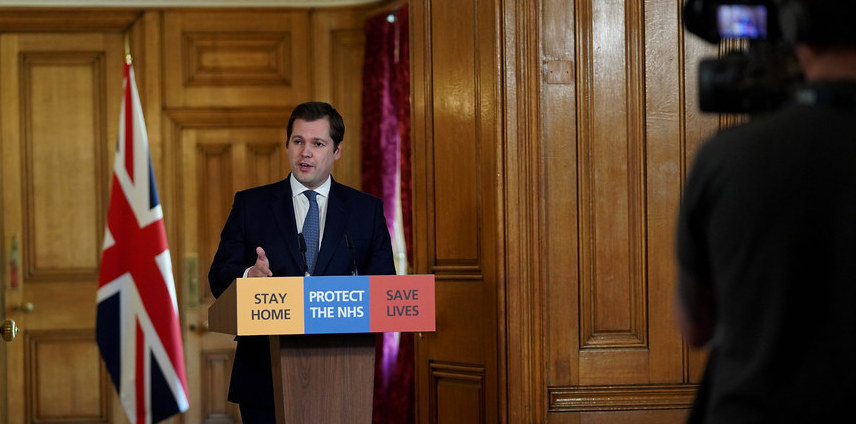
An extra £3.2bn has been poured into local government to help deal with the Covid-19 crisis. Adrian Jenkins argues more will be needed to confront spending on the pandemic, lost revenues and financial stability
Local authorities have received £3.2bn in extra funding but it is becoming clear that is not enough. Adrian Jenkins calls for clarity over funding Covid-19 spending, lost revenues and financial stability.
Coronavirus is placing huge pressures on local authorities and as a result the sector is facing widespread financial failure unless there is further financial support from central government. The lockdown is exposing the financial weaknesses in local government caused by 10 years of austerity—but also adding immediate financial pressures that are of a much greater scale.
One problem for local government is that the scale of these financial problems is not yet known. Will there be major losses in business rates and council tax? Probably, but we don’t know how much yet. And local government has put itself in a weak position: it always manages to balance budgets whilst claiming it is at a “tipping point”. The Treasury’s view, not unreasonably, is that local authorities tend to “cry wolf” and that it will only provide more funding when there is strong evidence.
Confidence trick
So far, local government has received £3.2bn in general funding (the famous two tranches), £500m in Hardship Fund for council tax support claimants, plus a further £600m that is largely passed directly to care homes. It is clear that this is not enough.
To some extent, the sector has been distracted by arguments about dividing the pie rather than maximising the size of the pie. But the evidence is already there that the financial pressures on local authorities is greater than the £3.7bn of direct funding.
Connecting this evidence with certainty about whether individual local authorities will issue section 114 notices requires a further step—but it is not difficult to see that the only thing standing between directors of finance issuing these notices is an expectation that there will be more funding from central government. It is only a confidence trick that is keeping many local authorities afloat.
At the heart of this problem is a lack of clarity and structure from Whitehall about how it will support local government. A strong commitment upfront from ministers in the early days of the crisis has been undermined by less-than-helpful statements (“sharing the burden”) since. Add to that a muddled allocation methodology for the second tranche of £1.6bn.
Worryingly, some ministerial statements have suggested that local authorities should use their own reserves first: not unreasonable, but not particularly helpful either.
Objectives
We are not here to argue about whether the distribution of the £1.6bn is justified or not. What is more important to the sector is that it lacked transparency (about quantum, distribution and process): there are no clear objectives for what the Government wants to achieve, or the process it is going to follow to get there.
What is the point of the funding to local government? The objectives, in our view, are twofold.
Firstly, to move funding to ensure local authorities can provide the essential services to support the fight against Covid-19. Secondly, to ensure that every authority is financially viable.
So far, the focus has been on the former and this has partly been achieved (although there is still a significant shortfall; see £10bn needed for local government to manage Covid-19 crisis). Increasingly local authorities will want to engage on the latter, and, without engagement from central government, s151 officers will be looking at s114 notice.
How should funding to local government be structured? Our suggestion is that funding should be split into three strands:
- Funding additional expenditure associated with Covid-19;
- helping authorities with reduced income streams;
- ensuring authorities remain financially viable.
Funding additional expenditure
This is rightly the immediate focus of funding from central government. Distribution of that funding is difficult, however. We do not yet know the relationship between local spending on Covid-19 and infection rates or any other needs basis, such as the existing adult relative needs formular (adult RNF).
It is likely that some spending is universal and that funding could reasonably be distributed on the basis of population. Some spending is more closely linked to the size of an authority’s older population, and there is also evidence that infection rates are higher where there are greater levels of deprivation. Other types of spending correlated with specific “needs” (e.g. homelessness).
We need a more sophisticated approach than has been used so far in the first two tranches of funding. DELTA returns might help to show the distribution of spending across the country, and the types of bases that are most suitable. At the very least, the sector needs a transparent approach from the ministry for local government that makes use of the evidence that is available.
Helping with income losses.
The distribution of income losses will be very different to the distribution of spending pressures, and we need to have clarity about when funding is for income losses and when it is for expenditure.
The second funding tranche was very muddled: it seemed to be a bit of both, and different for different sectors.
A more fundamental question is whether the government be compensating authorities for income losses, and if so, to what extent?
Your answer to this question possibly depends on how much income your authority generates. But it will require a more sophisticated approach to get this right. Income sources such as car parking is very unevenly distributed.
And there will be concerns about “moral hazard” if the national taxpayer was funding losses from commercial investment. For the most important income streams—council tax and business rates—we will not know the scale of the losses for a few more months.
What the sector needs is a longer-term commitment to support lost income along the lines of the “income guarantee” proposed by the County Councils Network. One option might be to guarantee income losses up to an agreed threshold, and allow councils to fund losses above this threshold from borrowing.
Ensuring financial viability.
Direct funding cannot be a panacea that ensures no authority needs to issue a s114 notice. The quantum is unlikely to be high enough, and the distribution is never going to fully coincide with spending pressures and income losses. And no basis of distribution can possibly reflect “lost savings”.
A sensible backstop might be to allow capitalisation of losses, and without further financial support from central government, the ultimate backstop can only be the (unlimited) ability to increase council tax.
Currently, the government’s fall-back option is that local authorities facing a s114 should approach MHCLG with their problems.
After what happened to Northamptonshire County Council when they issued their s114, the prospect of throwing oneself on the mercy of central government is not an enticing one. The offer has the hollow ring of, “we are auditors and we are here to help”.
There might be cases that need bespoke help from MHCLG, but I am sure that the sector would prefer properly structured support that did not have to rely on one-on-one help.
Confidence
Backing up these principles, the sector needs confidence that there will be a process for reviewing the local government’s funding requirements (preferably every month), and that the government is committed to delivering these objectives.
There was a feeling that the second tranche of funding was a lot harder to drag out of the government than first; and whether this is true or not, it is about confidence, and that is lacking.
Without confidence in the process (and the outcome), s151 officers will start to think that a s114 notice might be necessary after all. And that is in no-one’s interests.
Adrian Jenkins leads the funding advisory service at Pixel Financial Management.
FREE monthly newsletters
Subscribe to Room151 Newsletters
Monthly Online Treasury Briefing
Sign up here with a .gov.uk email address
Room151 Webinars
Visit the Room151 channel













